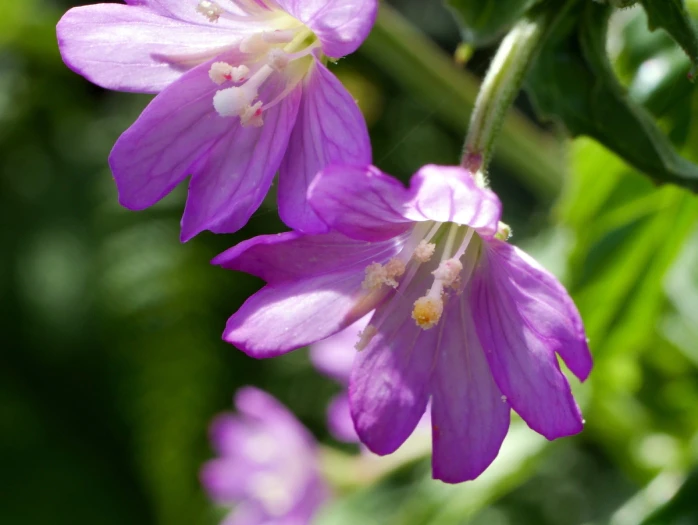Alpine Willowherb
(Epilobium alpestre)
Alpine Willowherb (Epilobium alpestre)
/
/

Wolfgang Jauch
CC BY 4.0
Image By:
Wolfgang Jauch
Recorded By:
Copyright:
CC BY 4.0
Copyright Notice:
Photo by: Wolfgang Jauch | License Type: CC BY 4.0 | License URL: http://creativecommons.org/licenses/by/4.0/ | Rights Holder: Wolfgang Jauch | Publisher: iNaturalist | Date Created: 2019-08-11T13:30:46-07:00 |

























Estimated Native Range
Climate Requirements
| • Precipitation | 54" - 73" |
| • High Temp. | 57°F - 71°F |
| • Low Temp. | 15°F - 25°F |
Summary
Epilobium alpestre, commonly known as Alpine Willowherb, is a perennial herb native to alpine and subalpine zones in Europe and the Caucasus, including the Alps and regions of Western Asia. It is typically found at elevations of 2,600 to 8,200 feet in meadows, rocky slopes, and along stream banks, where it contributes to the biodiversity of high mountain ecosystems. Alpine Willowherb reaches heights of 12 to 39 inches, with robust, erect, and hollow stems. Its flowers are pink, radial, and 0.4 to 0.7 inches wide, blooming from July to September, and are considered quite showy against the backdrop of its green foliage.
Alpine Willowherb is valued for its ability to adapt to harsh mountainous conditions and for its ornamental flowers, which add color to rock gardens and alpine plantings. It is relatively low maintenance, requiring minimal care once established. In cultivation, it prefers well-drained soils, tolerates a range of soil types, and requires full sun to partial shade. While not commonly used in urban settings, it can be a unique addition to specialized gardens focusing on high-altitude or alpine plants. It is not known for significant disease problems or aggressive roots, but in ideal conditions, it can self-seed and spread, which should be monitored to prevent unwanted proliferation.CC BY-SA 4.0
Alpine Willowherb is valued for its ability to adapt to harsh mountainous conditions and for its ornamental flowers, which add color to rock gardens and alpine plantings. It is relatively low maintenance, requiring minimal care once established. In cultivation, it prefers well-drained soils, tolerates a range of soil types, and requires full sun to partial shade. While not commonly used in urban settings, it can be a unique addition to specialized gardens focusing on high-altitude or alpine plants. It is not known for significant disease problems or aggressive roots, but in ideal conditions, it can self-seed and spread, which should be monitored to prevent unwanted proliferation.CC BY-SA 4.0
Plant Description
- Plant Type:
- Height: 1-2 feet
- Width: 0.5-1 feet
- Growth Rate: Moderate
- Flower Color: Pink
- Flowering Season: Summer
- Leaf Retention: Semi-deciduous
Growth Requirements
- Sun: Full Sun, Part Shade
- Water: Medium
- Drainage: Medium
Common Uses
Bee Garden, Butterfly Garden, Low Maintenance, Rock Garden
Natural Habitat
Alpine and subalpine zones in meadows, rocky slopes, and along stream banks
Other Names
Common Names: Alpine Fireweed
Scientific Names: Epilobium alpestre , ? oppositifolium , Epilobium alpestre f. alternifolium , Epilobium alpestre f. angustifolium , Epilobium alpestre f. latifolium , Epilobium alpestre f. oppositifolium , Epilobium alpestre f. parvifolium , Epilobium alpestre f. quaternifolium , Epilobium alpestre f. ternifolium , Epilobium alpestre var. oppositifolium
GBIF Accepted Name: Epilobium alpestre